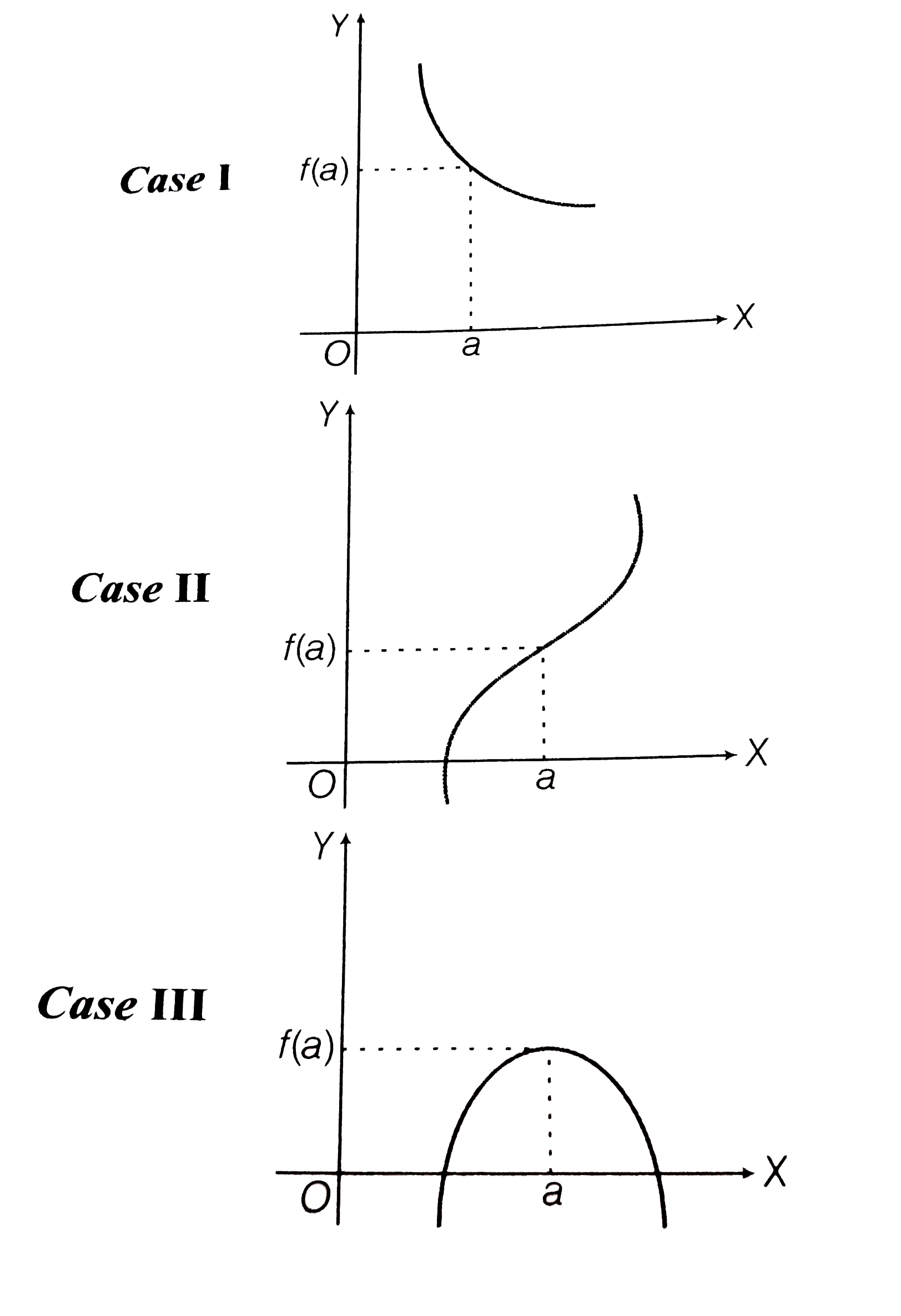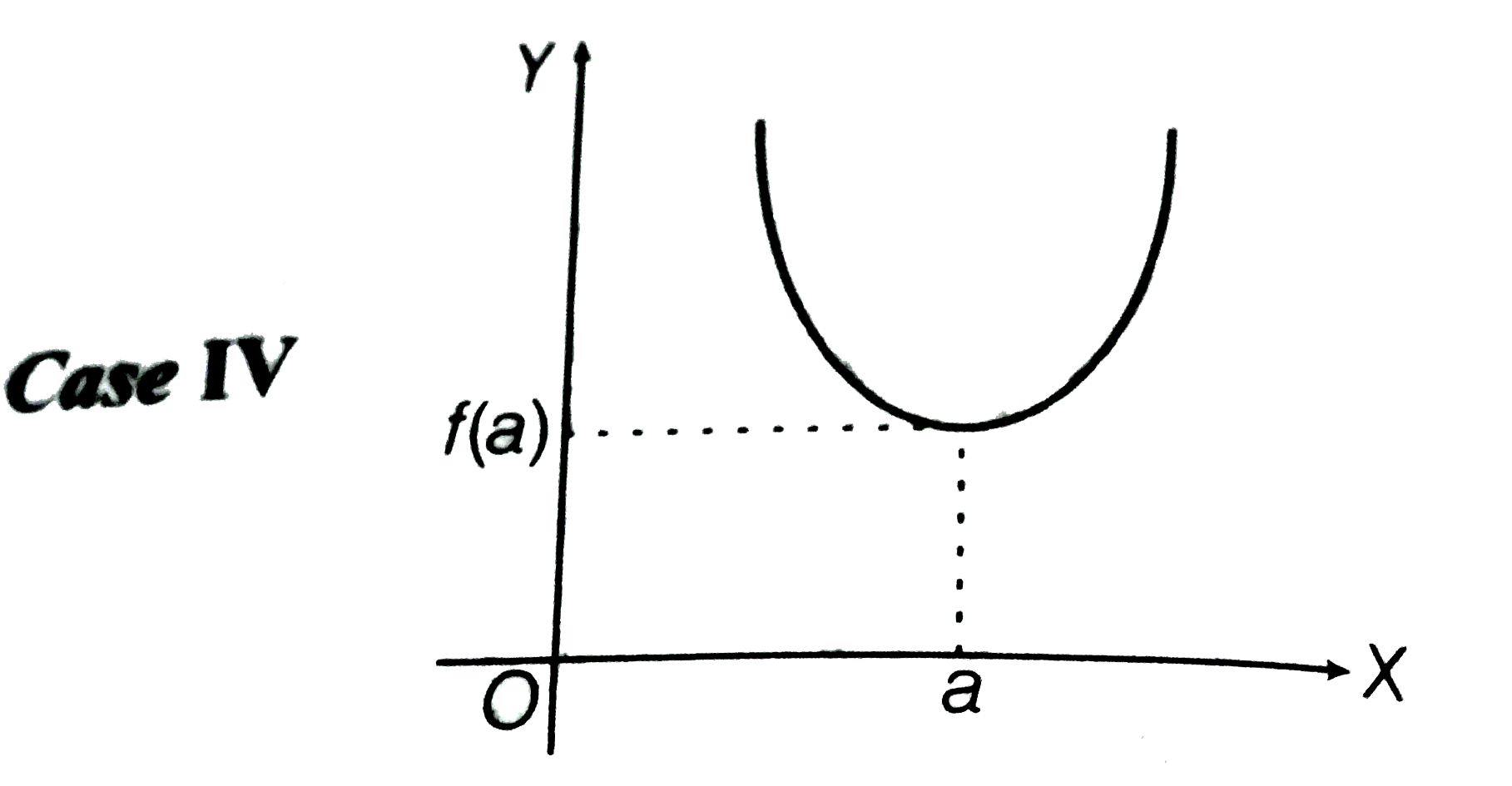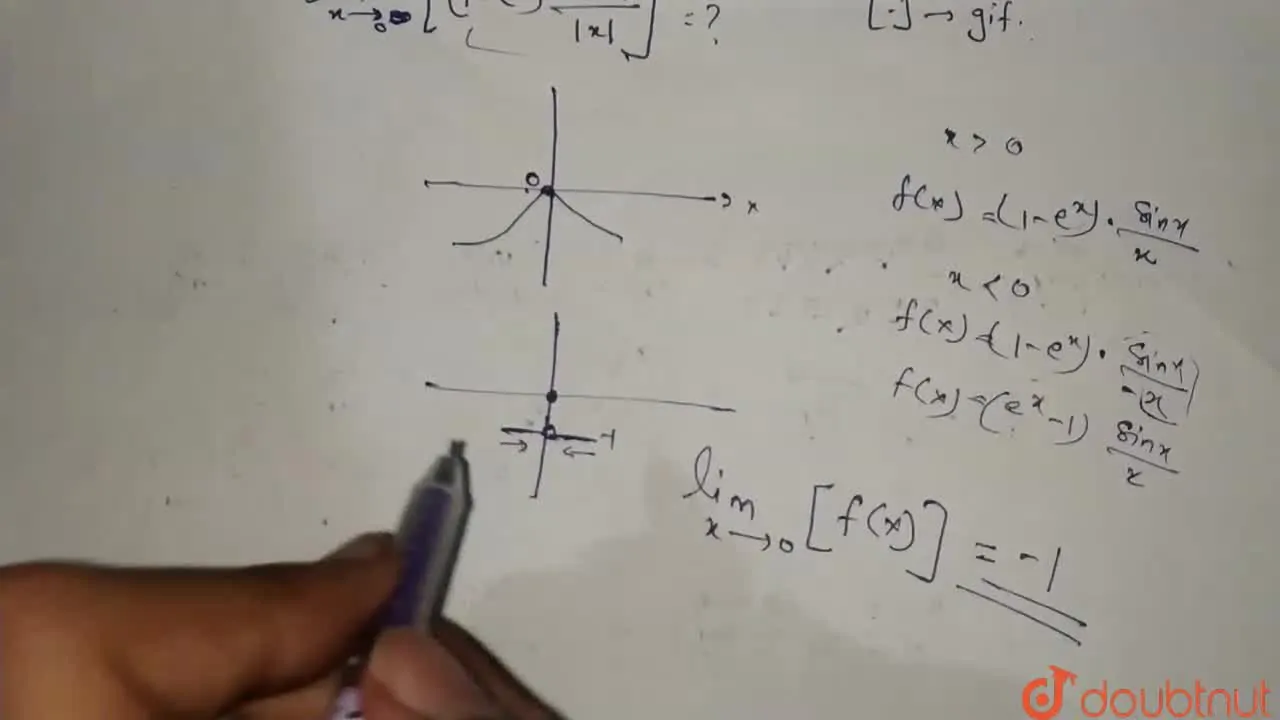To evaluate limx→a[f(x)], we must analyse the f(x) in right hand neighbourhood as well as in left hand neighbourhood of x=a. E.g. In case of continuous function, we may come across followign cases.
![To evaluate lim(xtoa)[f(x)], we must analyse the f(x) in right hand neighbourhood as well as in left hand neighbourhood of x=a. E.g. In case of continuous function, we may come across followign cases. If f(a) is an integer, the limit will exist in Case III and Case IV but not in Case I and Case II.lim(xto0)[(1-e^(x)).(sinx)/(|x|)] (where [.] denotes the greatest integer function) equals](https://d10lpgp6xz60nq.cloudfront.net/physics_images/ARH_AAG_DIF_CAL_C05_SLV_115_Q01.png)

Iff(a) is an integer, the limit will exist in Case III and Case IV but not in Case I and Case II.limx→0[(1−ex).sinx|x|] (where [.] denotes the greatest integer function) equals
0
1
-1
Doesn't exist
The correct Answer is:C
Step by step video & image solution for To evaluate lim_(xtoa)[f(x)], we must analyse the f(x) in right hand neighbourhood as well as in left hand neighbourhood of x=a. E.g. In case of continuous function, we may come across followign cases. If f(a) is an integer, the limit will exist in Case III and Case IV but not in Case I and Case II.lim_(xto0)[(1-e^(x)).(sinx)/(|x|)] (where [.] denotes the greatest integer function) equals by Maths experts to help you in doubts & scoring excellent marks in Class 12 exams.
Related Playlists
- BOOK - ARIHANT MATHSCHAPTER - LIMITSEXERCISE - Exercise (Single Option Correct Type Questions)40videos
LIMITS
- BOOK - ARIHANT MATHSCHAPTER - LIMITSEXERCISE - Exercise (More Than One Correct Option Type Questions)15videos
LIMITS
- BOOK - ARIHANT MATHSCHAPTER - INVERSE TRIGONOMETRIC FUNCTIONSEXERCISE - Exercise (Questions Asked In Previous 13 Years Exam)8videos
INVERSE TRIGONOMETRIC FUNCTIONS
- BOOK - ARIHANT MATHSCHAPTER - LOGARITHM AND THEIR PROPERTIESEXERCISE - Exercise (Questions Asked In Previous 13 Years Exam)4videos
LOGARITHM AND THEIR PROPERTIES
Similar Questions
To evaluate limx→a[f(x)], we must analyse the f(x) in right hand neighbourhood as well as in left hand neighbourhood of x=a. E.g. In case of continuous function, we may come across followign cases.


Iff(a) is an integer, the limit will exist in Case III and Case IV but not in Case I and Case II.limx→1[cosecπx2]−1/(1−x) is equal to (where [.] denotes the greatest integer function).View Solutionlimx→0[(1−ex)sinx|x|] is (where [.] represents the greatest integer function )
View Solutionlimx→0[sin(sgn(x))(sgn(x))], where [.] denotes the greatest integer function, is equal to
View SolutionSolve limx→0[sin|x||x|], where [.] denotes greatest integer function.
View SolutionThe value of limx→0sin[x][x] (where [.] denotes the greatest integer function) is
View Solutionlimx→0e[|sinx|][x+1] is , where [.] denotes the greatest integer function.
View Solutionlimx→0([−5sinxx]+[6sinxx] .(where [-] denotes greatest integer function) is equal to
View SolutionGiven limx→0f(x)x2=2, where [.] denotes the greatest integer function, then
View Solutionlimx→0[−2xtanx], where [.] denotes greatest integer function is
View Solutionlimx→π/2[x2]loge(sinx) (where [.] denotes the greatest integer function)
View Solution


